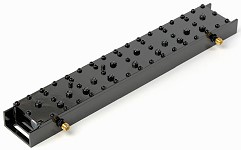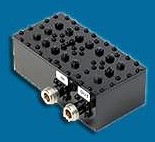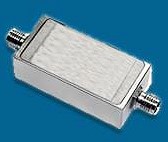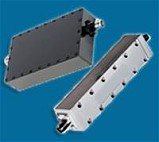Anatech Electronics November 2022 Newsletter |
||

Press Release Archives: 2024 | 2023 | 2022 | 2021 |2020 2019 | 2018 | 2017 | 2016 | 2015 2014 | 2013 | 2012 | 2011 | 2010 2009 | 2008 | 2007 | 2006 | 2005 Content is copyright of company represented. Page format, custom text and images are RF Cafe copyright - do not distribute.
Sam Benzacar of Anatech Electronics, an RF and microwave filter company, has published his November 2022 newsletter that features his short op−ed entitled "Face Reality: Level 5 Vehicle Autonomy Won't Be Here Anytime Soon." A definition of Level 5 on the level5auto.com website declares thus: "Level 5 driving is full driving automation. That is, the car's systems can accomplish every part of the dynamic driving task (DDT). They can also monitor all of the vehicle's surroundings and make predictions about what the objects in the space around it will do next. Further, the car can do this anywhere. The systems are no longer confined to a limited operational design domain (ODD). And, finally, the car operates without the expectation or need for a human to ever take over driving - even in the case of a system failure." The scheme requires not only perfect AI (artificial intelligence), but perfectly functioning electronics processors, sensors, and control over the car's throttle, steering, and brakes. That's a pretty tall order. As Sam notes, if any monitoring and/or intervention by the human occupant is required, then Level 5 has not been achieved. Level 5 may well be an asymptote of the vehicle autonomy curve. A Word from Sam Benzacar Face Reality: Level 5 Vehicle Autonomy Won't Be Here Anytime Soon
While vehicle autonomy is likely to be achieved sometime in the future – possibly the very distant future – we may find that the capabilities delivered by ADAS are more than good enough, don't require reliance on connectivity that presents its own problems (of which hacking comes to mind), and go a long way toward reducing crashes and fatalities all by themselves. Or at least that's what I'm thinking, because to achieve full (Level 5) autonomy a vehicle would have to react correctly in every possible scenario. And as the number of these scenarios is infinite, that's a tall order. Even some of the most ardent supporters of vehicle autonomy have admitted that Level 5 is at least a decade and possibly even decades from being realized because AI is unlikely to entirely replicate what humans can do anytime soon. Phil Koopman, an engineering professor at Carnegie Mellon University who has worked on autonomous technology for more than 25 years, has noted that the limitations of machine learning will inevitably lead to mistakes that human drivers wouldn't make. For example, he recalled a self-driving system a few years ago that struggled to identify the color yellow. "The system was missing bicyclists in yellow coats and construction workers in yellow jackets," he says. “The system was 99 percent accurate - and it still missed them.” In my view, a vehicle is fully autonomous, or its not much of a benefit because we still have to play the role of driver, even if we don't have our hands on the wheel. Even GM's Cruise, which is arguably one of the most advanced “semi-autonomous” technologies, keeps close watch to make sure you're still there and ready for action. So, what's the point? It might do well on straight, open highways with little traffic, no pedestrians, and clearly defined exists, but in an urban environment, such a system would face orders of magnitude greater challenges, and that will require more than what the industry currently has to offer. Self-driving cars are actually already on the road, but they operate only at lower speeds within small geofenced areas, such as the Waymo One shuttle service in Chandler, AZ. It took years for Waymo to achieve this feat on Chandler's broad, straight, sun-drenched boulevards. But when do you suspect it will be possible before we allow a vehicle to take us to work from our homes at rush hour in a snowstorm? Not soon. For the foreseeable future, I believe we'll be relying on ADAS systems that are already extremely helpful, such as front and rear collision detection, automatic braking, lane departure warning, to name a few. These systems will surely become even better over the years and deliver tangible benefits - without forcing us to rely on an unseen presence whose actions we'll be forced to accept. In short, by the time autonomous vehicles become a reality, these emerging features will have already solved much of what autonomous vehicles are conceived of accomplishing. Samsung Breaks 28 GHz Distance Record
ONR Program Protects Military Spectrum Assets
Beaming Energy from Space Back in Focus
IEEE MTT Changes Its Names - By One Word
Anatech Electronics Introduces a New Line of Suspended Stripline and Waveguide Type RF Filters
Check out Our Filter Products
Cavity Band Pass Filters LC Band Pass Filters Cavity Bandstop/Notch Filter About Anatech Electronics Anatech Electronics, Inc. (AEI) specializes in the design and manufacture of standard and custom RF and microwave filters and other passive components and subsystems employed in commercial, industrial, and aerospace and applications. Products are available from an operating frequency range of 10 kHz to 30 GHz and include cavity, ceramic, crystal, LC, and surface acoustic wave (SAW), as well as power combiners/dividers, duplexers and diplexers, directional couplers, terminations, attenuators, circulators, EMI filters, and lightning arrestors. The company's custom products and capabilities are available at www.anatechelectronics.com. Contact: Anatech Electronics, Inc.
Posted September 26, 2022 |
||

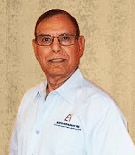 By Sam Benzacar
By Sam Benzacar Samsung Networks has achieved record average
download speeds of 1.75 Gb/s at a distance of 10 km using its mmWave 5G networking
equipment in collaboration in a recent field trial. Peak download speed was 2.75
Gb/s and average upload speed was 61.5 Mb/s. The fixed wireless access (FWA) connection
used Samsung's 28 GHz Compact Macro device that includes the base station radio
and antenna in a single form factor. Network carriers are already using it in Japan,
South Korea, and the U.S. Beamforming allows carrier aggregation of 5G bands, and
the test used eight component carriers (8CC) that delivered an aggregated 800 MHz
of spectrum. The goal was to determine if mmWave frequencies are suitable for dense
urban as well as rural areas
Samsung Networks has achieved record average
download speeds of 1.75 Gb/s at a distance of 10 km using its mmWave 5G networking
equipment in collaboration in a recent field trial. Peak download speed was 2.75
Gb/s and average upload speed was 61.5 Mb/s. The fixed wireless access (FWA) connection
used Samsung's 28 GHz Compact Macro device that includes the base station radio
and antenna in a single form factor. Network carriers are already using it in Japan,
South Korea, and the U.S. Beamforming allows carrier aggregation of 5G bands, and
the test used eight component carriers (8CC) that delivered an aggregated 800 MHz
of spectrum. The goal was to determine if mmWave frequencies are suitable for dense
urban as well as rural areas  The Office of Naval Research has awarded a $24.5
million contract to Systems Engineering Associates to develop the Electromagnetic
Maneuver Warfare Modular Suite (EMWMS). Its mission is to help military forces manage
and protect their use of RF, microwave, and lightwave spectrum. The mobile EMWMS
spectrum warfare system will be used by command, control, communications, and intelligence
users. It employs sensors, digital signal processing, and advanced computing technologies
to monitor the nearby electromagnetic spectrum and jam or spoof enemy communications,
sensors, and surveillance systems.
The Office of Naval Research has awarded a $24.5
million contract to Systems Engineering Associates to develop the Electromagnetic
Maneuver Warfare Modular Suite (EMWMS). Its mission is to help military forces manage
and protect their use of RF, microwave, and lightwave spectrum. The mobile EMWMS
spectrum warfare system will be used by command, control, communications, and intelligence
users. It employs sensors, digital signal processing, and advanced computing technologies
to monitor the nearby electromagnetic spectrum and jam or spoof enemy communications,
sensors, and surveillance systems.  The European Space Agency (ESA) plans to beam
power to Earth from space using microwave energy and wants more money to fund the
program. ESA's space-based solar power (SBSP) SOLARIS platform wants to investigate
technologies needed to realize the concept and the feasibility of using it. Thus
far, ESA has found SBSP to be a feasible power source after Airbus demonstrated
that it could use microwaves to transmit power at 118 ft., which it used to light
up a miniature city. Using orbital solar panels to beam energy to Earth using microwaves
isn't new, as NASA, Japan's space agency, the U.S. Navy, UK Space Energy, universities,
and private companies have been toying with the idea for years. China appears to
be the current leader as it has tested a ground-based receiver and balloons at up
to 300 m.
The European Space Agency (ESA) plans to beam
power to Earth from space using microwave energy and wants more money to fund the
program. ESA's space-based solar power (SBSP) SOLARIS platform wants to investigate
technologies needed to realize the concept and the feasibility of using it. Thus
far, ESA has found SBSP to be a feasible power source after Airbus demonstrated
that it could use microwaves to transmit power at 118 ft., which it used to light
up a miniature city. Using orbital solar panels to beam energy to Earth using microwaves
isn't new, as NASA, Japan's space agency, the U.S. Navy, UK Space Energy, universities,
and private companies have been toying with the idea for years. China appears to
be the current leader as it has tested a ground-based receiver and balloons at up
to 300 m.  The IEEE society focused on advancing microwave
theory and its applications is changing its name from the IEEE Microwave Theory
and Techniques Society to the IEEE Microwave Theory and Technology Society. It takes
effect in January. This isn't the first time this 70-year-old group has changed
its name: The American Institute of Electrical Engineers and the Institute of Radio
Engineers, the IEEE's predecessors, approved the formation of the Professional Group
for Microwave Electronics in March 1952. Three months later it was renamed the Professional
Group on Microwave Theory and Techniques, and in 1974 the group became the IEEE
Microwave Theory and Techniques Society. The IEEE has been working to expand its
reach in recent years to accommodate diversity in the microwave field.
The IEEE society focused on advancing microwave
theory and its applications is changing its name from the IEEE Microwave Theory
and Techniques Society to the IEEE Microwave Theory and Technology Society. It takes
effect in January. This isn't the first time this 70-year-old group has changed
its name: The American Institute of Electrical Engineers and the Institute of Radio
Engineers, the IEEE's predecessors, approved the formation of the Professional Group
for Microwave Electronics in March 1952. Three months later it was renamed the Professional
Group on Microwave Theory and Techniques, and in 1974 the group became the IEEE
Microwave Theory and Techniques Society. The IEEE has been working to expand its
reach in recent years to accommodate diversity in the microwave field. 